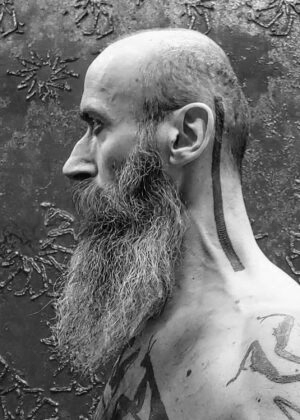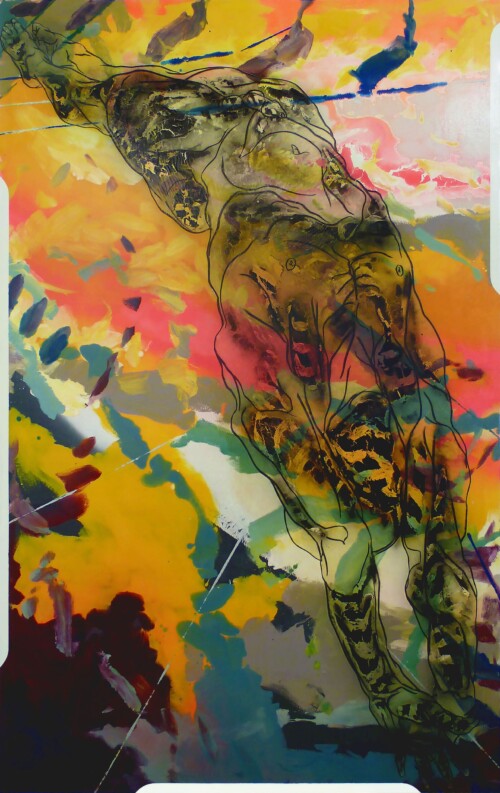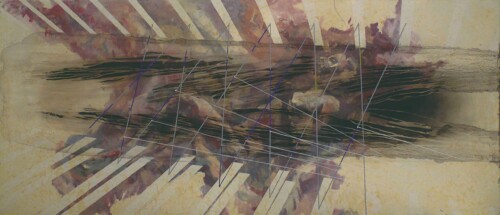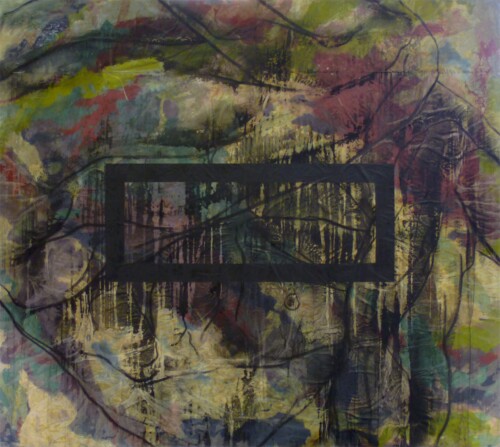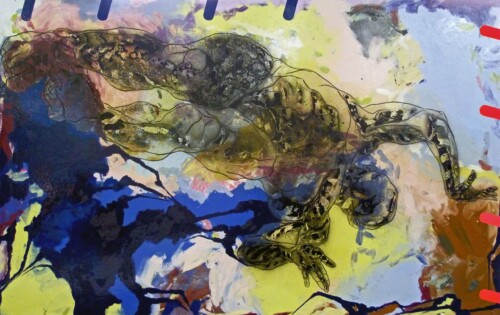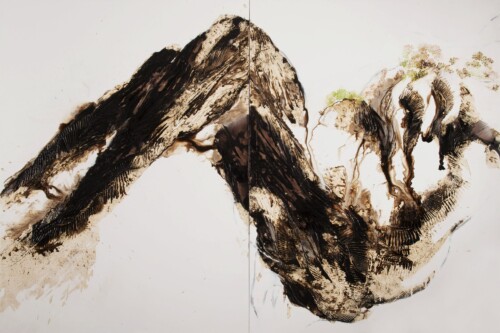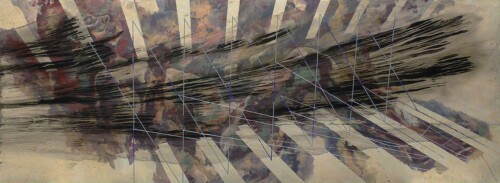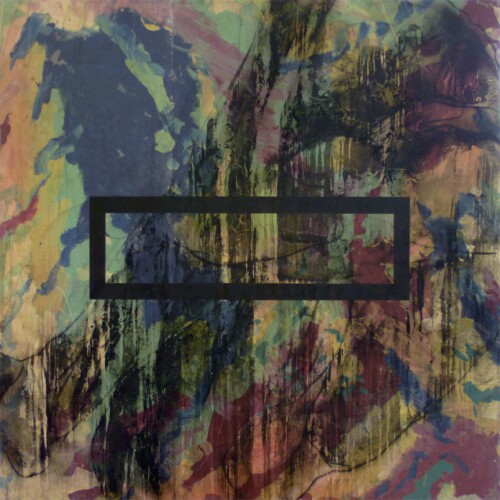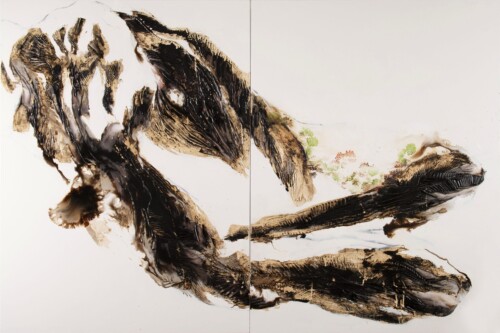BIOGRAPHY
Mirek Zahálka lives and works in Prague.
Until 2012, his work was inseparably linked to the medium of drawing. The subject is hands and feet as proxy symbols for the perception of the entire human body. Forms are defined and process is generated through emotional and mental limits. Shapes correct the expansion of internal surfaces and decaying structures. This kind of individual code is subject to specific rules and systems. The result is a complicated visual space. Since 2012, the expression of dynamic figurative drawing has been the main concept of large-scale canvases using experimental technologies, Burn Mark (2013), Time Lapse (2015). Until 2016, a period full of reflections on how to combine expressive drawing and printmaking with painting in multi-layered forms. Dynamic sequences are particularly applied in the paintings Tuning the Frequency (2014). By 2017, canvases are realized where drawings begin to provide technical support for acrylic painting. The process associated with the transformation of drawing into painting, brings these two seemingly opposing media together in a complex relationship of continuity, Relevancy (2015/16), Lethargy (2017). Since 2017, Autonomy (2018), Driftwood (2017) can subsequently be seen directly as a development, turning the geometry of figurative signs into a painterly manuscript. All graphically visible elements bring the painting back to the sensory plane, Sedative (2018). A play of interconnecting supporting and opposing layouts of the paintings’ construction. From 2019, an interest in space comes to the fore. It is not enough to work with volumes and shapes only in a painterly way. It is modelled directly on the surface of the canvas, Steppe (2019), Defense (2020), Debris (2022). The relief of the mass is then activated by painting. The paintings Intrinsic Property (2023-24), Slate Meadow (2025) test the limits of the pictorial surface by applying structural matter. In all paintings, the figurative subject is preserved. M. Zahálka paints with acrylics, synthetics and liquid asphalt, models with perlite matter and works with paper. Since 2008, M. Zahálka has been employed in the painting studio of the Ateliers and Workshops of the National Theatre in Prague. Since 2013, he has been the head of the painting workshop.
CV
MZ
Born September 24, 1973 in Broumov Czech Republic
Nationality Czech Republic
Contact Address Patockova 14, 16900 Prague, Czech Republic
E-mail personal: mirekidle/at/seznam.cz, work: m.zahalka/at/narodni-divadlo.cz
Mobil +420732385828
On-line www.mirekzahalka.tumblr.com
WORK /EDUCATION
since 2008
The National Theatre in Prague, CZE
-Studios and Workshops
-Position Held, since 2013: Head of the Painting Studio
1995-2001
Academy of Arts, Architecture and Design Prague, CZE
-Department of Fine Arts: Conceptual and Intermedia Art
-Head of the Studio: prof. Adéla Matasová
1992-1994
Vaclav Hollar School of Arts Prague, CZE
-Department of Illustration and Book Design
1988-1992
Vaclav Hollar School of Arts Prague, CZE
-Department of Advertising Graphics
/PRIZES
2009
The Grand Prix Award
-The 5th International Drawing Biennale Melbourne, AUS
-PAF /Polish Art Foundation Inc.
EXHIBITION LIST /INDIVIDUAL
2021
02/07-22/08 2021
„DEFENSE“ Orlická Gallery, Rychnov nad Kněžnou, CZE
-Vlastislav Tokoš /curator
2018
31/08-28/09/2018
„AUTONOMY“ Morzin Gallery, Vrchlabí, CZE
-Ivan Neumann /curator
STATEMENT
Mirek Zahálka’s large-format paintings express a kind of primary landscape of figuratively conceived human existence. They are expressive, although they are created in a graphically defined pictorial space. They can also be defined as drawing schemes, formed from layering records of individual figures. By copying and deforming them, the original originality of the shapes disappears, as does their specific meaning symbolism. It is not about the direct representation of the body, its volumes or weight, but about the discovery of corporeality as the container of the mystery of the human spirit. The artist’s figures seem to be going through traumatic experiences, dramas of injury, self-destruction. The choice of expressive material also proves this. The artist works with acrylic and synthetics to achieve a predominantly monochrome and pasty colour scheme, pastes drawings onto transparent lacquered papers, covers the surface of the painting with structural material, and sprays graffiti. His subject matter is the endangerment of the human being, the fragility and vulnerability of the body as a container for the spirit. In the artist’s imagination, the body and the spirit form a single entity, exposed to external pressures and the danger of losing personal identity.
-text by Vlasta Čiháková-Noshiro /Czech art historian and orientalist and art curator/
